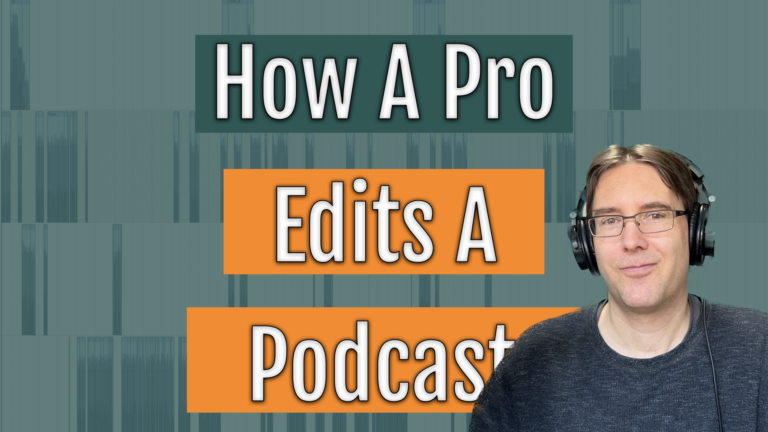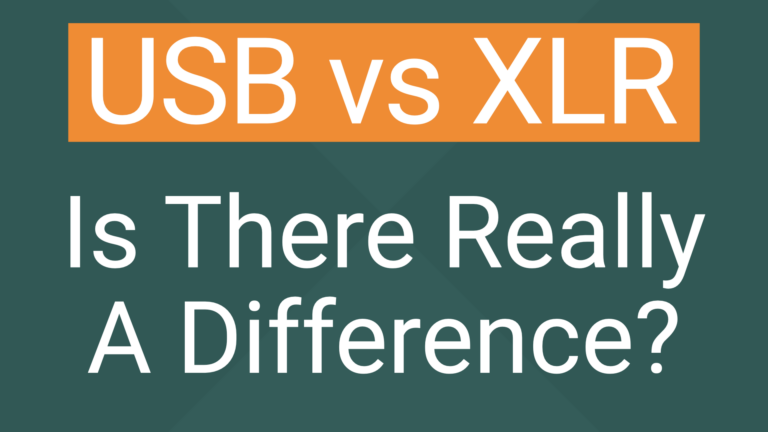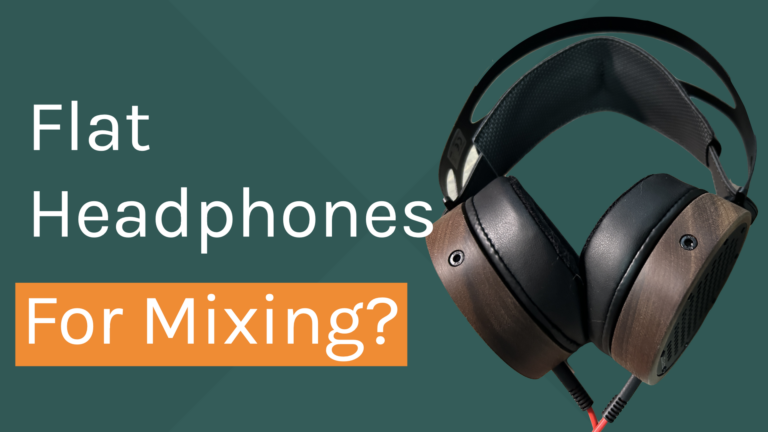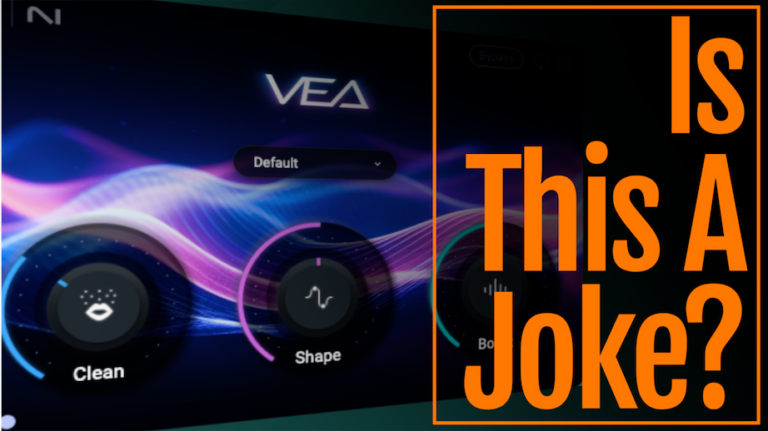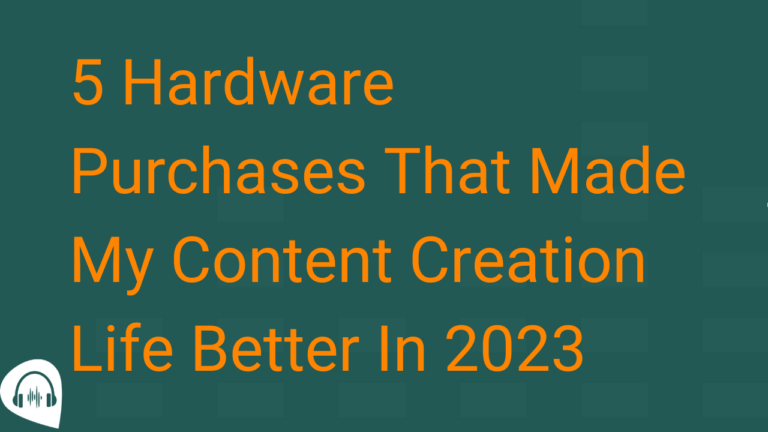Hey everybody.
Today, I want to address some common myths and misconceptions about podcast equipment and audio quality that are floating around online.
Myth #1: XLR mics are superior to USB mics.
Contrary to popular belief, the type of connector on a microphone doesn’t directly affect sound quality. The real difference lies in the preamps. Preamps in USB mics are generally cheaper and noisier than those in an interface. While USB mics might not be ideal for music recording, they work well for podcasting in many situations. Don’t just take my word for it check out the video in this article with clips of USB and XLR mics and see if you can hear a difference.
Choose the right mic for your situation
The choice of USB vs XLR should really come down to your budget and situation. USB mics are best used by podcasters who record solo shows or conduct remote interviews. In these situations, the simplicity of a USB mic can’t be understated. Even if you choose to use a USB, you will do yourself a favor by selecting one that also has an XLR port. This will give you flexibility if your podcast needs change and need to go XLR.
XLR mics become the obvious choice if you are recording more than one person in the same space. Maybe you have a studio or interview people on the street or some other in-person location. Tying to use multiple USB mics connected to one computer has been known to cause challenges and sometimes require unreliable workarounds. This is where using an audio interface, podcast mixer, or a portable recorder enter the equation. These devices are built to allow your computer to work with more than one mic at a time.
Regardless of which type of mic you choose, the key is to choose reputable brands over cheap, no-name options. You’ll know you’re getting a quality mic with a warranty and customer support. As a podcast editor, the worst mics I come across are cheap headsets and the budget, no-name knockoffs.
Myth #2: Spending more on equipment guarantees better audio.
Many podcasters mistakenly believe that high-end equipment used by professional shows is the secret to their sound quality. Upgrading from a Samson Q2U to a Shure SM7B, for instance, won’t change your voice or compensate for poor room acoustics. It might help to some extent, but it’s not a cure-all.
Good Audio starts Before You Hit Record
The recording engineer is the one who is responsible for getting good quality recordings. Believe it or not, every podcast has a recording engineer. Many times, that engineer is you. If you are your own engineer, it’s important to understand the factors that influence your recording quality. This doesn’t end with your audio. If you have guests, you are their recording engineer, too. While this might seem daunting, there are resources to help, like my video with tips and tricks for running remote podcast interview sessions like a pro and the pre-show checklists available through my mailing list.
Your Space Matters
Your recording space plays a massive role in your podcast’s audio quality. Unfortunately, many podcasters ignore this crucial aspect and focus solely on gear. If you’re going to invest in audio quality, this is where to start. No matter your equipment, recording in a reverberant space won’t yield great results.
While post-production plugins like Supertone Clear can reduce reverb, they often compromise the audio. I recommend quality acoustic treatment products from companies like GIK Acoustics and Audimute. Foam is a cheaper alternative, but ensure it’s at least 2 inches thick and use various thicknesses for a broad frequency range. Remember, you don’t want your space to sound too dead.
Choosing the right equipment
Many new podcasters start out with the Blue Yeti because it’s what they’ve read is a good starter mic and then get frustrated because their recordings don’t sound professional. The problem here is the wrong type of mic was selected. The Yeti is a condenser mic, which is a poor choice for anyone who isn’t recording in an untreated space because condenser mics are extremely sensitive. This sensitivity acts as a magnifying glass, amplifying every noise and acoustic imperfection inside your room, and in some instances, outside your room.
Dynamic mics, like the Shure SM7B are less sensitive and more forgiving of imperfect spaces. This makes them the best choice for new podcasters. The downside to the decreased sensitivity is the mic needs more gain.
A good Mic setup
Buying a new mic might be tempting, but the actual improvement for listeners is often minimal. Most podcasters make the mistake of positioning themselves too far from their mics. For dynamic mics, stay within 2-4 inches, and for condensers, 4-8 inches. The farther you are, the more gain you need, which can amplify room acoustics. In the video above, I demonstrate how much of a difference a few inches make and what things sound like at a foot away. With a well positioned dynamic mic, you are able to minimize the impact of bad acoustics and background noises and get good recordings that will need less work during post-production.
Myth #3: Professional editing can fix everything.
As an editor, it’s frustrating when clients expect us to turn poor recordings into studio-quality audio. An editor’s capabilities are limited once the recording is done. As we discussed above, the engineer is responsible for capturing good recordings. The editor’s job is to mix and edit those recordings into a finished product. An editor can take good recordings and make them sound professional. They can not, however, take a Zoom recording of two people in home offices using laptop mics sound like they were recorded in a studio…not right now. AI is quickly changing things.
Conclusion
In summary, the best improvements come from utilizing your existing equipment effectively and addressing your recording space’s acoustics. High-quality audio starts with the recording process; post-production can only do so much. I hope you’ve found this video helpful, and I look forward to our next chat.

